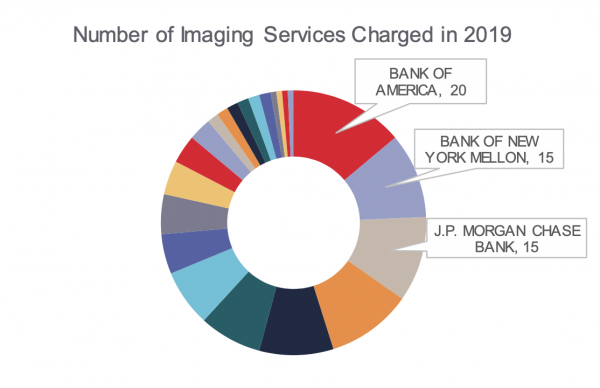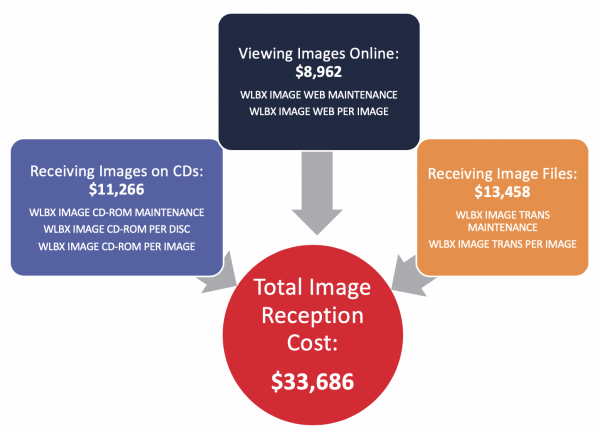Whether you are looking at a check image through an online banking portal, image file, DDA statement, or CD-ROM, there is a cost for each image, and the dollar amount may surprise you.
In today’s digital environment, we take thousands of pictures in a month, or even a day, without any consideration to cost. It is free to take a selfie and send it to anyone you want. This same imaging technology has revolutionized the check clearing process and created numerous opportunities to improve the treasurer’s daily process of deposit processing, check reconciliation, research, and archival of payment and collection data.
Sending digital images instead of the physical original or copies has saved the commercial banking industry millions annually in transportation and physical storage costs and has drastically reduced float. Even with all of these initial savings and benefits, treasurers should be warned that the cost of imaging services is increasing along with their growing dependency on them.
Whether you are looking at a check image through an online banking portal, image file, DDA statement, or CD-ROM, there is a cost for each image, and the dollar amount may surprise you.
We queried our database to dive into the costs of imaging services and reviewed services from 22 of the largest banks in the U.S. Excluding the 933 imaging services related to lockbox, we found 157 services that large corporations were charged for in 2019 related to imaging services for paid checks, positive pay, and deposits (Exhibit 1). The bigger the bank, the larger the number of imaging services charged overall. Bank of America tops the list but provides six different options in length for image archive services – anywhere from 180 days to 10 years.
Exhibit 1

Source: Redbridge Analytics
Lockbox images
Most corporate treasurers do not factor imaging costs into their cost per item analysis for checks versus other collection options. In one recent engagement, our client was paying $33,646 annually just for the delivery of the images from their lockboxes. In this case, the client was receiving the same image three times: via their online banking portal, image transmission file, and CD-ROMs (Exhibit 2).
Receiving an image transmission file that can be stored and archived locally in a shared drive allows your team to perform the research they need without the additional costs of online user access, per item image accessed fees, and any CD-ROMs that new computers cannot read anyway.
Exhibit 2

Source: Redbridge Analytics
Paid check images
For years, banks have charged a fee to image a check your organization writes, so check image capture costs are nothing new. What has evolved is the fee for distributing those images.
In the past, the bank would return your physical check, or you could request a photocopy of the check. You can still request a photocopy of a paid check with typically a 24- to 48-hour turnaround time. Paying to access all images online provides treasurers with instant access to all of their checks paid images, but in this digital age of instant gratification, that comes with a price.
Exhibit 3 below shows the average price for monthly maintenance, per item capture, reporting, retrieval, and media services specifically related to imaging. Many treasurers are surprised that even with the monthly maintenance charges and per item capture charges, they can many times be charged per click when they actually select an image online to view it.
Exhibit 3
Average Price of Imaging Services

Source: Redbridge Analytics
Multi-product image portals
Rather than maintaining and charging separately for lockbox image portals, paid check imaging portals, remote deposit imaging portals, etc., the growing trend is for banks to charge a per account fee to access all of your company’s images, regardless of type. If you paid separately, one might find it easier to turn off access to certain portals and simply receive an imaging file. With ‘all or none’ options, 99.9% of companies will choose ‘all’ for the convenience, regardless of the cost.
Image statements
I take for granted the ability to receive images of deposited and paid items on my DDA statement monthly. As with most things in the commercial banking arena, this option also comes at a cost. The monthly fee per account to receive a DDA statement with images is anywhere from $0.50 to $25.00, with the median falling at $3.30.
Conclusion
Next time you look at a picture of any type of payment online, file a CD in a drawer, or receive an image file, think about doing an exercise to evaluate the costs of imaging services, and contact us if you have any questions.
